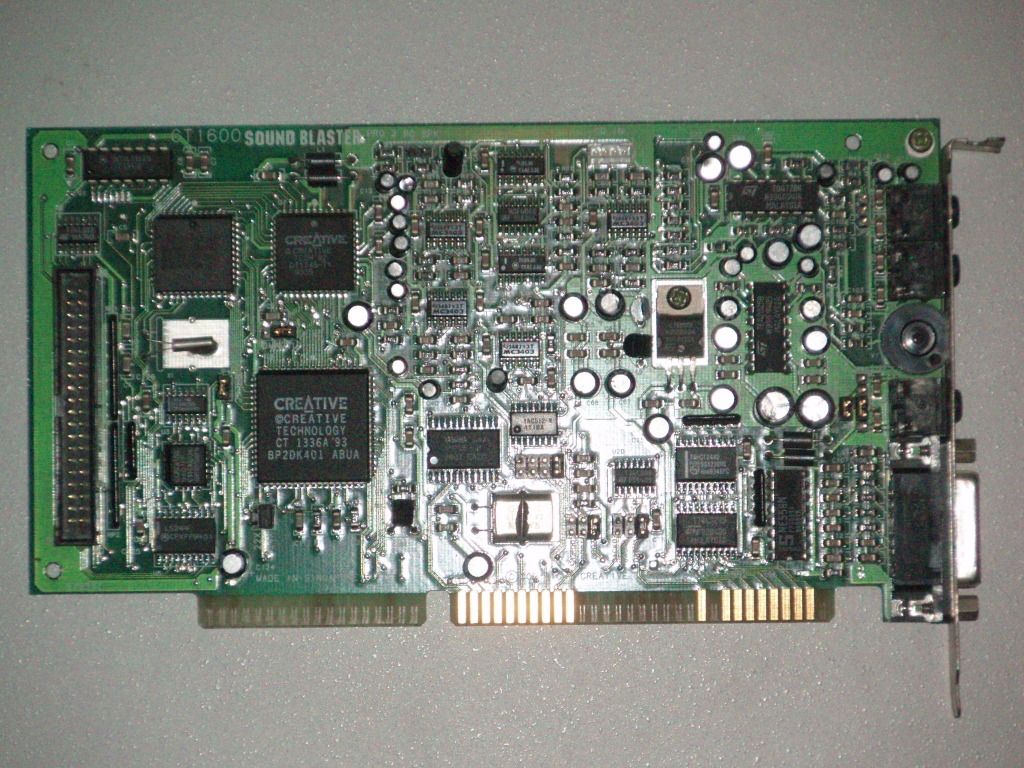raymangold22 wrote:This comparison is quite interesting however, there are a few errors:
#1 It seems like a lot of people actually can't tell genui […]
Show full quote
This comparison is quite interesting however, there are a few errors:
#1 It seems like a lot of people actually can't tell genuine OPL3 when they hear it. A lot of Vibra-16s have OPL3, even if there is not a YMF262 present (the FM is actually integrated like CT1747: which in some cases, sounds more pleasant than YMF262). In other words, it's essentially a YMF262 integrated inside a creative chip...
This is quite unfortunate because we have a lot of people who are throwing out or desregarding genuine OPL3 sound cards.
I believe the CT4180 as aforementioned actually does have genuine YMF262 integrated in the CT2505-TDQ2 chip (which is labeled Vibra16C, not "S" or "XV").
#2 ESFM (ESS's FM implementation) is hit or miss. Some MIDIs it can sound absolutely fantastic, other ones, it does not. Also behaving to certain commands, it can become distorted in higher frequencies.
--> if the audio sounds thin, that is due to the card's implementation and not ESFM itself.
#3 Crystal FM Synthesis! This is probably my favourite due to the distinctive "square hats" in the percussion, as well as that traveling hissy cymbal. There were different versions of this manufactured by crystal, some earlier versions having broken FM, but the good ones are quite nice.
I actually talked about the OPL3 variants here. As well as recordings of these awesome variants... typically I run dual OPL3 which is a Crystal FM and YMF262 in unison.
I only recorded 2 Vibra cards so far. The CT4180 and the CT2260 (genuine YMF262). Maybe the OPL3 is integrated on the CT1747 as you say and maybe it sounds like a real yamaha chip i just do not know. What i know is that the CT4180 does not sound like a real opl3 to me. In fact, it sounds almost identical to the SB32 (CT3600)
The best way to appreciate the magnitude of the difference with my recordings is with Descent intro.
Listen to Descent intro With CT4180(https://dl.dropbox.com/u/43851675/CT4180/Desc … ibra16c%29.flac) and CT3600(http://dl.dropbox.com/u/43851675/CT3600/Desce … tro-CT3600.flac), pretty similar uh?
Then listen to it with a typical good quality opl3 chipped card such Rock16 (http://dl.dropbox.com/u/43851675/MAD16/descen … ntro-MAD16.flac)or earlier sound blasters.
The bassy lead synth at the beginning is very different on the integrated creative chips, quite duller in fact. This is the most flagrant example i think but other differences are here also, such as more `chimey` or sort of `metallic`sounding hi hats. Basically i find the CT4180 to be very consistent with CT3600, a card which i was led to believe was a prime example of the CQM clones.
This sound similarity is the reason why I affirmed with alot of certitude that the CT4180 is a clone. I appreciate your input rayman and this is a nice example of how recordings can help solve questions like that. Im definitely looking forward to getting samples from other vibra card and see how some of em might be surprisingly interesting.
About the crystal FM, i sure do not like the card i have here, but curious as to hear other variants. Im not one of those who spits on anything that is not a tru branded yamaha chip, even though from all my experiment so far i definitely like the real chip bettter.
Oh And I like that Dual OPL3 setup that you use, ill have to try that one day 😁
Edit: Added links for your convenience!
FM sound card comparison on a Grand Scale!!
The Grand OPL3 Comparison Run.
